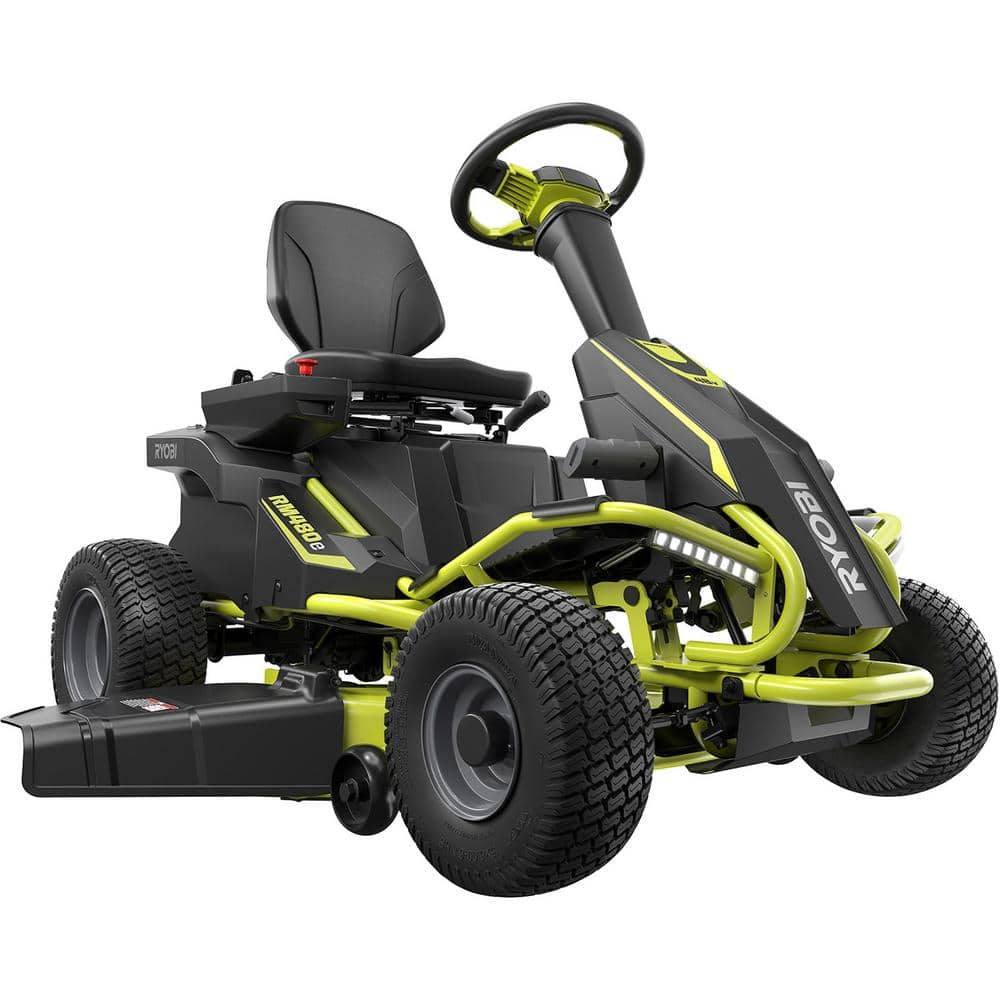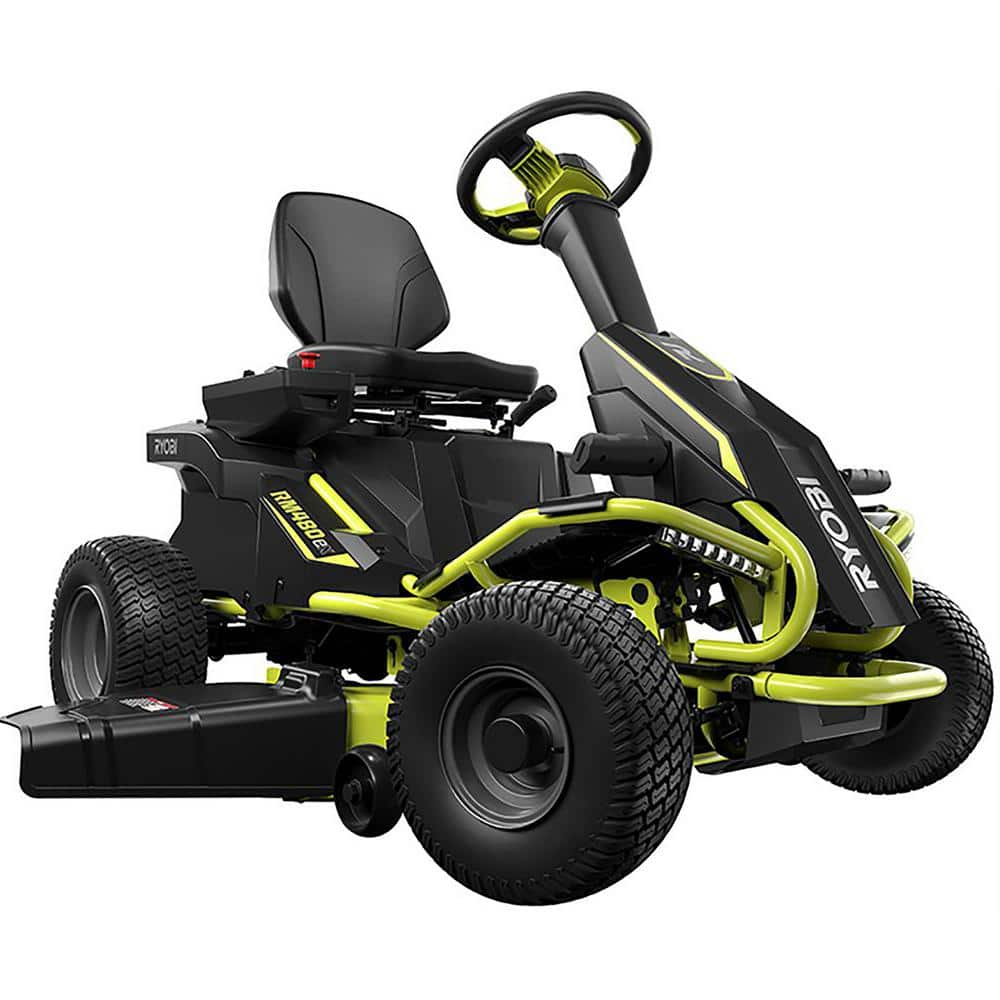RYOBI 48V Brushless 38 in. 75 Ah Battery Electric Rear Engine Riding Lawn Mower
3 Brushless Motors for Superior Power and Performance. 1 Charge Offers Up to 2 Hours of Runtime or 2 Acres of Mowing. Battery Operated: Fully Electric Mower With Zero Emissions.
Remove the gas and fumes from cutting your lawn with the RYOBI 48-Volt Riding Lawn Mower. Powered by 75Ah Batteries and with 2 hours of run time this mower is a green alternative to traditional gas riding mowers. The RYOBI 48-Volt Riding Mower comes equipped with 38 in. 2-Blade Deck and 12 Position Manual Deck Adjustment to get a clean, level cut on your lawn. The RYOBI 48-Volt Riding Mower is equipped with LED Headlights, USB Phone Charger and Cruise Control features making mowing as efficient and convenient as possible. The rear access charging port makes charging your rider easy when the job is done.
- Low maintenance: no belts, spark plugs, or filters
- Battery operated: no gas, fumes, charge and go
- Up to 2 hours of runtime: up to 2 acres per charge
- Dual high-powered brushless motors
- Quiet cutting
- Cruise control, USB charging
- LED headlights
- 12 position manual deck adjustment
- 38 in. 2-blade deck
- Charges through standard 120-Volt outlet
- Replacement Battery: Leoch model LPC12-75
Additional information
| Assembled Depth x Height x Width (in.) | 63 x 46 x 38.5 |
|---|---|
| Cutting Width (in.) | 38 |
| Front Wheel Size (in.) | 15 |
| Mower Deck Width | 38 |
| Rear Wheel Size (in.) | 16 |
| Turning Radius (in.) | 16 |
| Certifications and Listings | TUV Listed |
| Manufacturer Warranty | 3 year Limited Warranty. Battery warranty is for one year only. |






by Reggie
When the freight company just dropped it off in front of my garage and never let us know that it was arriving that day, I was overwhelmed at first, especially because the crate flat and metal packing had been broken. It did arrive earlier than expected though, which I was happy about. However, I called the Home Depot Trotwood, OH store and they sent Bruce over to take it out of the packaging and examine the mower. Bruce was a total life saver—very knowledgeable, friendly, and knew exactly what to do to get the mower out of the shipping material. Just can’t say enough great things about Bruce—he’s a great guy. Luckily, everything was fine with the mower (Ryobi 48V Brushless 38in 75Ah Battery Electric Rear Engine Riding Mower). I charged it overnight and it was ready to go. I’ve had it 2 months now, and I love it!! I mow about a half acre and it only uses half the battery charge. To get close for trimming I use the left side of the mower. I tied up the clippings blower flap on the other side because it was getting in the way. I use the mulching part that was included and I like it a lot better than the clippings blower or whatever you call that. Anyway, I highly recommend it.
by Daniel
when I first saw the riding mower I was impressed by the appearance and how well built it appeared to be. I was not mistaken. As I sat on the mower there was a solid feel to the mower. All the operations were in plain sight and also solid. Also the battery charger very solid. As I cut the mower cut easily, even the high grass. I thought that the battery would not last for my two acres of cutting. Was I surprised. When I finished the battery had only used half of the charge. I am greatly impressed. The mower is better than I expected and is much easier to use than the gas riding mower. I have used the mower three times and am very pleased. More than I expected. I have have had the riding mower for about 6 weeks.
by Jeff
This is a fantastic mower. I have 2 acres of various grasses, lots of trees and other obstacles and a few sloping areas. I love the turning radius and the cutting performance. I usually mow for two hours or more and I have never run out of charge.